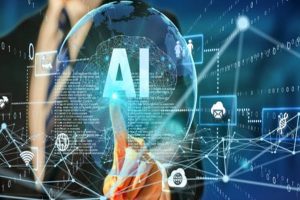Academic pursuits in the 21st century are going beyond traditional boundaries to include in its approach a multidimensional, multidisciplinary, and interdisciplinary understanding. Being collaborative is the key to solving some of the major learning gaps.
Since a single mind, a single approach, and a single school of thought are often not sufficient to assess a matter in its entirety, it becomes necessary to access the collaborative approach.
Advertisement
Educators need to ensure that the students’ minds and abilities blossom in an atmosphere which is safe and structured yet fiercely unrestricted in its ethos. To realise their interests and potential to the fullest, students need to be freed from predetermined propaganda.
Advertisement
The fullness of joy of learning and life might not reveal itself to the student if the student’s mind is burdened to confirm and imitate. A large collaborative approach opens those doors for young students.
Educators can become more effective if they set academic goals and expectations in collaboration with their students. These might include complex tasks or simple class agreements.
For instance, setting timelines together, setting academic expectations and assessment timelines together, setting common expectations as a group and collectively forming class rules. Collaborative efforts ensure that learners become confident, responsible, reflective, innovative and engaged.
The key stakeholders in a student’s collaborative experience include the student, the parents, the special educator, the mainstream teachers, support staff, counsellors and therapists.
Students need to be empowered so that they can guide humanity to a more luminous future. Children are endowed with constructive energy, dynamism and inner potential that need to be brought to the surface through guided education and opportunities.
To this effect, some core areas that must be an integral part of any education curriculum are the development of creative and aesthetic appreciation, sensory and perceptual development, cognitive development, physical fitness and motor development, personal, social and emotional development and language development.
The focus should always be based on the ‘in to out’ and ‘near to far’ principles. In other words, first comes the understanding of the inner self and development of the inner potential and then comes into existence its external manifestation in the form of creativity, inventions, progressive actions and thinking.
‘Near to far’ develops in students the ability to observe, appreciate and respond to what is closest to them and then slowly expand their wings to bring the world under it.
Tips for collaborative experience: At school
Strive for strategies which focus on equity and not equality. Different learners have different needs, and similar concessions and accommodations may not be helpful for all.
Inter-department collaboration on subject matter helps learners examine the same concept and issue from different points of view. This also ensures that teachers tap into each other’s strengths to enhance student’s classroom experiences.
The academic content delivery must answer the Why, What and How.
Incorporate recall activities and cognitive skills strategies in each class plan.
Supply children with ample gross motor skills, fine motor skill activities, and sensorial activities.
Work closely with career counsellors, special educators, occupational therapists, physiotherapists, speech therapists, and music and art therapists to help students with differentiated needs.
Try to adhere to a universal design of learning, which will ensure that each learner gets the support they need.
Educators can also collaborate with student peer groups to create a community for the students within their class group.
Collaborate with parents, friend groups, support staff, sports teachers, and extracurricular educators.
Education for the new emerging world demands that individual groups, societies, communities, and countries respect each other.
Each individual, community and country is integral to the overall global well-being, and therefore, our future generations must learn to co-exist with differences in approach and ideas, differences in economic backgrounds, and differences in social habits and religious affiliations. They must develop both liberty for themselves and tolerance towards others.
The 21st century also requires many more inventors, scientists, leaders, advocates, wild-life enthusiasts, nature lovers and change-makers.
Students should be trained and encouraged for their leadership skills in day-to-day life; they should be applauded for trying to be problem solvers, supporters, and helpers. This will develop in them self-reliance and confidence to take the lead for bigger decisions later in life.
Education institutes should have broad-based curriculums, which centre more on values and less on rules. The new world requires human beings to be more experiential and hands-on, and to this effect, education needs to be centred around life skills, personal skills, emotional skills, respect towards resources and sensitivity towards all mankind and nature.
The writer is an educator, consultant and columnist who practises and advocates principles of integral education.
Advertisement











